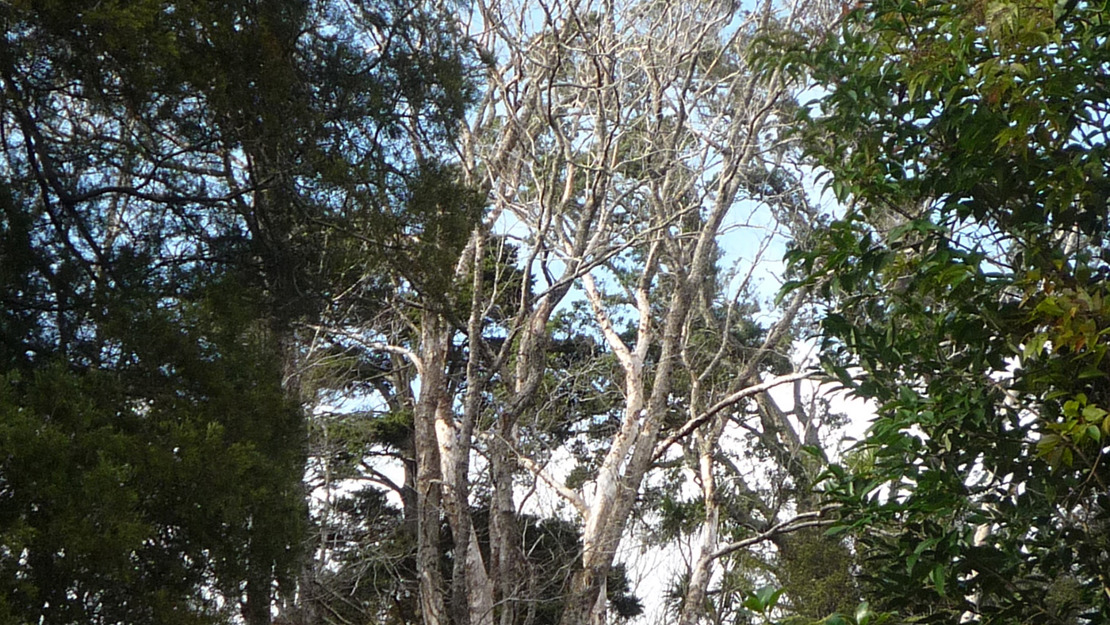Ophiostoma novo-ulmi
Dutch elm disease
Family: Ophiostomataceae
Origin: Asia

Regional Pest Management Plan (RPMP) status
- Unwanted organism
- Whole region — Sustained control
General description
Dutch elm disease is a fungal pathogen, infecting elm trees (Ulmus spp. and Zelkova spp.) spread predominantly by elm bark beetles (Scolytus multistriatus) but also through human-mediated spread of elm wood.
Infected trees show wilting branches, leaves curl, turn yellow/brown and drop prematurely from the tree. Ultimately the tree will die due to clogged water-conducting tissues. Tree mortality can be as rapid as a few days.
What you need to know
To help protect our environment:
- You must not distribute, move or release Dutch elm disease within the Auckland region.
- You must not move any untreated Dutch elm plant material within the Auckland region.
- You must destroy all elm plants on land that you occupy if they are infected with Dutch elm disease and you are directed to do so by an authorised person.
- You must mulch any elm plants that you have been instructed to destroy, and you must not move this infected elm material further than 500m from the site of the parent tree for at least three months after mulching.
- You must clean all vehicles, machinery or other equipment used in connection with untreated elm material with one of the following disinfectants before moving that vehicle, machinery or equipment off-site: Sterigene, 5% bleach, or 80% ethanol or methylated spirits.
- You must not store elm wood for firewood or other purposes.
Habitats
Infects elm trees (Ulmus spp. and Zelkova spp.).
Impact on environment
Risk to amenity elm plants; Tāmaki Makaurau is estimated to have about 30,000 elm trees, including many iconic specimens in public as well as private gardens. Dutch elm disease also poses a risk to health and safety and property, as falling tree limbs can cause significant damage.
Control
Recommended approaches
Cut down infected trees, mulch them and leave on-site for at least three months. Sterilise all associated equipment afterwards before moving it off-site. For more information on Dutch elm disease, please contact Auckland Council at pestfree@aucklandcouncil.govt.nz.
Caution: When using any herbicide or pesticide please read the label thoroughly to ensure that all instructions and safety requirements are followed.



